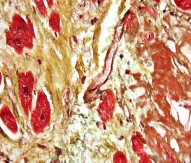
More complicated than Type 1 and Type 2
A review of diabetes has suggested that it is a more heterogeneous disease than the current system of classification implies.
The current subdivision of cases into Type 1 or Type 2 is a simplification and does not explain the real range of diabetes.
Leif Groop, of Lund University in Sweden, and his co-authors wrote: “The notion of diabetes has widened in the past few decades with the realisation that several different overlapping mechanisms can lead to diabetes, and these mechanisms and manifestations of the disease can be modified by genetic and environmental factors.”
The researchers wrote that the disease “seems to result from a collision between genes and environment,” and the rapid increase in both forms of it “suggests that many patients are genetically predisposed to both forms”.
Diabetes is a disorder of chronic hyperglycaemia, and has traditionally been classified as Type 1, characterised by autoimmune destruction of insulin-secreting beta cells, or Type 2, typified by insulin resistance and features of metabolic syndrome. A monogenic subset, maturity-onset diabetes in the young, characterised by poorly functioning beta cells, has also been noted, they said.
Increasingly, many patients present with features of two or more types. The group with the most heterogeneity and risk of misclassification, they said, is young adults between the ages of 20 and 40.
The study was funded by the Swedish Research Council, Lund University/Region Scania, Swedish Diabetes Research Foundation, and European Community grants. It was published online in the journal The Lancet.




